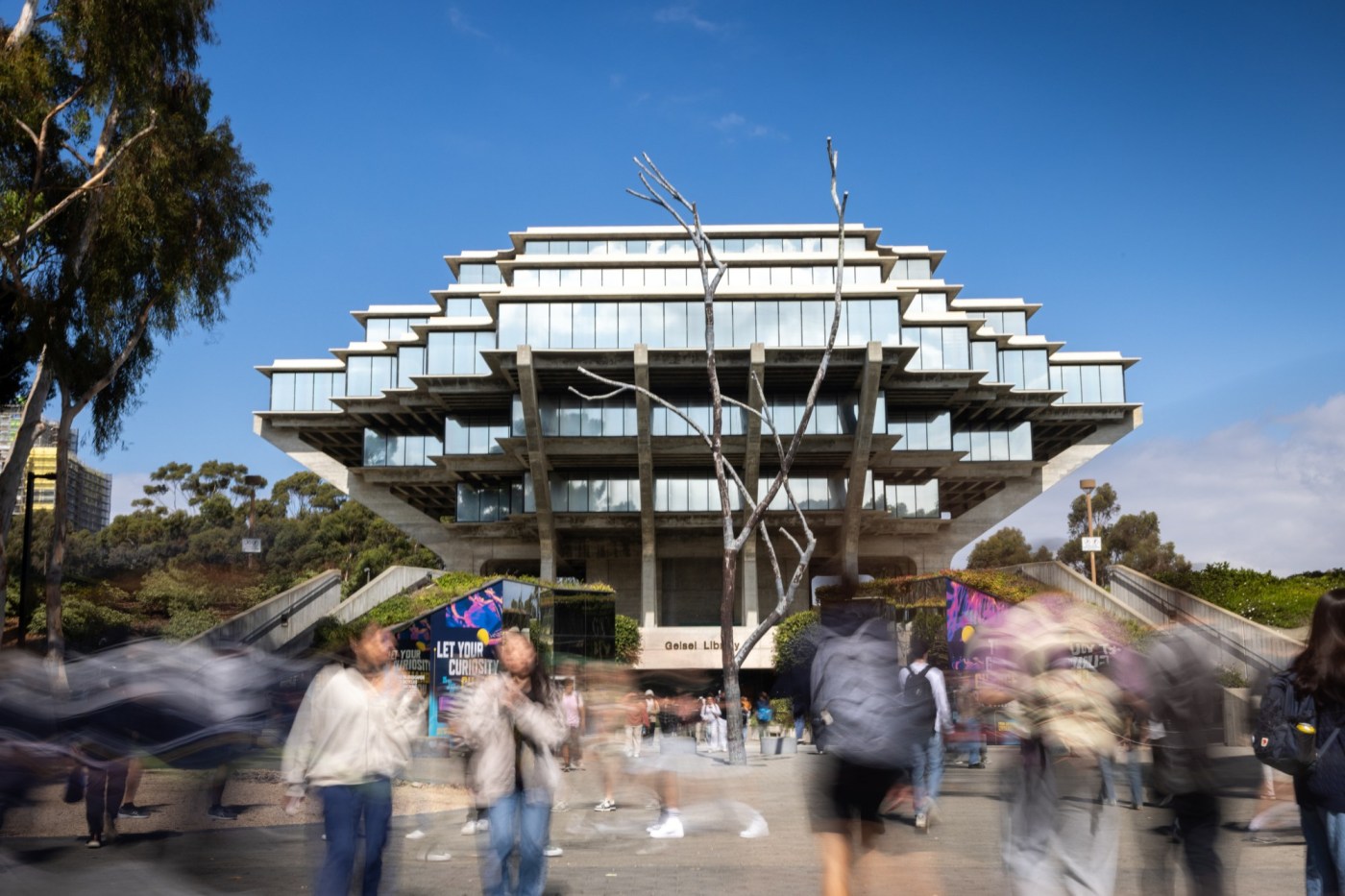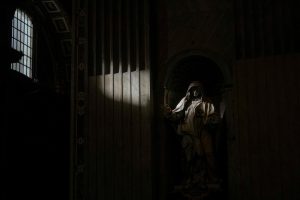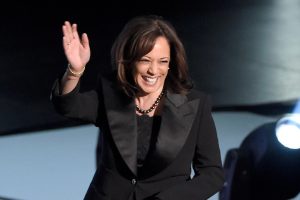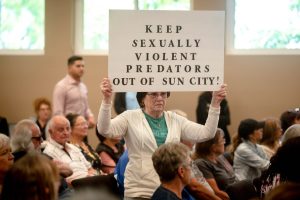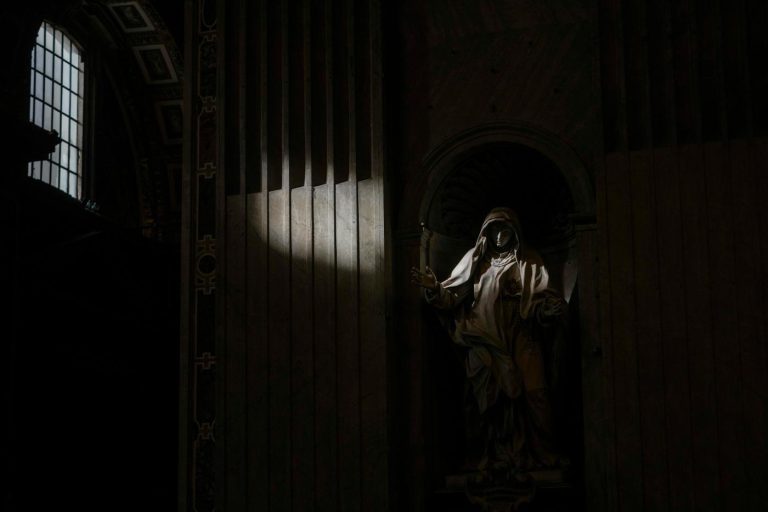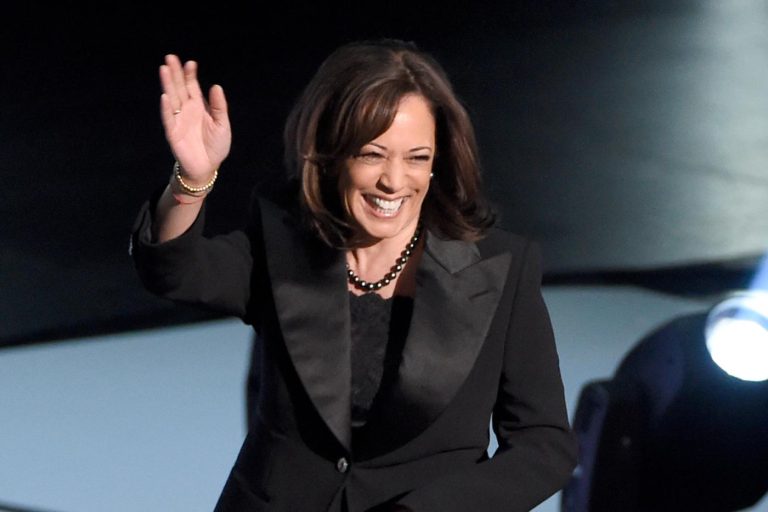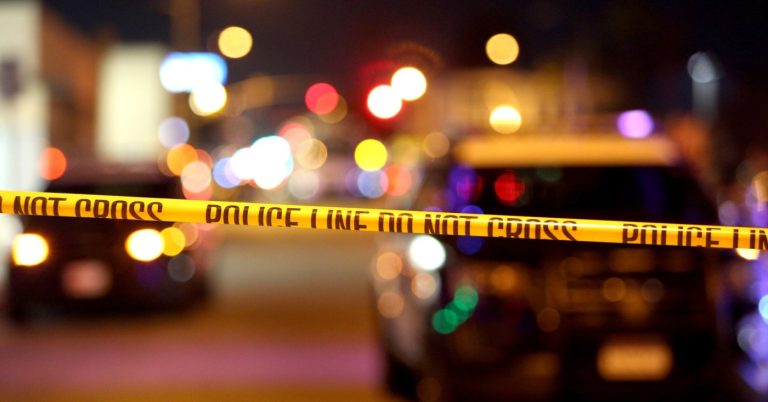When you enroll at a school whose initials are said to stand for University of California for the Socially Dead, you don’t really expect hot Saturday nights.
But freshman Josh Ulofoshio was optimistic, and days before classes began, he threw a party in his dorm suite for classmates he’d befriended online before he’d even arrived on campus.
Then he got a noise complaint. Just like that, the party was over.
“What I learned,” said Ulofoshio, who is considering a career in medicine, “is that you study at UCSD and party at SDSU.” (His TikTok followers wondered: ”You were expecting something more?”)
As UC San Diego begins its 64th year, it’s hard to know if this old chestnut is true.
A deep culture gap has left UCSD’s undergraduates and its much older leaders with vastly different perceptions of campus life.
Amanda Jarerat Bolin participates in a K-pop workshop at Pacific Hall on Sunday, Oct. 13, 2024. (Ana Ramirez / The San Diego Union-Tribune)
Related Articles
Stanford psychologist behind the controversial ‘Stanford Prison Experiment’ dies at 91
Woman dies 2 days after co-worker shot her at California college, police say
Feldman: The problem with banning college legacy admissions
UC Santa Cruz police seize phone of student suing over pro-Palestine expulsions
California college shooting that left employee critically injured was ‘workplace violence,’ officials say
In interviews with about 30 students, many told The San Diego Union-Tribune the school is so obsessed with raising enrollment and polishing its reputation that it pays insufficient attention to the social side of the college experience.
The university often communicates in a chilly, impersonal voice, they said, which leads them to tune out rather than engage, making building a sense of community harder.
“Chancellor (Pradeep) Khosla wants students to survive with the bare minimum,” said Adalia Luo, editor of The Guardian, the campus newspaper. “Eat, drink, some housing and pretty much nothing else.”
Engineering student Charlotte Dong likes her classes and research — the vibe less so.
“Sometimes I feel like this campus is soulless…” she said. “I’m a fourth year student and I just got my first (school T-shirt).”
About 22,000 students are living on campus this fall. But on Friday and Saturday nights, the place can resemble a ghost town, some say.
This gloomy perception does not sit well with Khosla, who said during an interview last week that UCSD has been working tirelessly to make sure that fun is central to a school that puts students through three grueling, 10-week quarters a year.
He noted that more than 660 student organizations had recently held or were planning social events. He sees that as a sign that UCSD has emerged from the isolation of the pandemic and is putting behind it the fears that arose last spring during campus protests over the war in Gaza and the crackdown that followed.
Josh Ulofoshio, 18, left, plays basketball with his roommate Aidan Conne, 18, at the Sixth College basketball court on Tuesday, Oct. 15, 2024. Ulofoshio and Conne met through social media before coming to the UC San Diego. (Ana Ramirez / The San Diego Union-Tribune)
Khosla, 67, says he’s heard from UCSD officials that students have become more engaged over the last two years, a claim partly based on a recent review of how many people are turning out for school events and student clubs. That’s included everything from a beach event (2,500 people) to a screening of the movie “Scream” (400).
He says a buzziness exists in places like the school’s outdoor amphitheater, which recently featured a drag show that students loved, and a large crafts center located in a student village.
“Is it like Dartmouth, and the engagement that they have had?” Khosla asked. “The answer is no.”
But, he added, “I am trying to build a vibrant university.”
Not that everyone is unhappy. Many students interviewed by the Union-Tribune said they feel privileged to attend one of the 10 largest research universities in the U.S. And they praised Khosla for rapidly adding housing on a campus whose enrollment just hit a record 45,273, per preliminary UC data. The campus had planned to top out at 42,400 more than a decade from now.
The tensions appear to be both generational and tied to UCSD’s rapid growth.
Ivan Ramirez studies French in his dorm at the Pepper Canyon West building on Monday, Oct. 14, 2024. (Ana Ramirez / The San Diego Union-Tribune)
Students said they’re baffled by UCSD’s insistence on sending them emails and newsletters, which they hate, and links to webpages, which they hate even more. They cringe at UCSD’s modest offerings on Instagram and are puzzled why it doesn’t use TikTok. They also wonder why things can’t be better at a school with a famous computer science department.
This disconnect means that many students never learn about social events they might be eager to attend.
“I have no idea about a lot of the events that are going on unless I literally walk past them,” said Jay Brake, a communications major.
Even there, the communication is limited. Across town, an enormous digital billboard advertises events at SDSU. There is no billboard at UCSD’s athletic center, and there is only a small one at the 2,600-seat Epstein Family Amphitheater. It is often out of service and hard to see in sunlight.
The amphitheater is a touchy issue for another reason. On Wednesday, a large crowd turned out to see the well-known author Ocean Vuong. But many of the musical acts — including the band Death Cab for Cutie — are from their parents’ generation, not theirs. UCSD has 35,000 undergraduates; they are the core audience.
Khosla acknowledges there are problems.
“I would not tell you we know exactly how to communicate. But that’s good for us to hear (so we can) figure it out,” he said. “How can we build communications channels that make sense?”
UCSD’s fall enrollment hit a record 45,273. About 22,000 students live in campus housing that includes high-rise residence halls. (Ana Ramirez / The San Diego Union-Tribune)
‘Do they know who we are?’
There’s skepticism about just how committed Khosla is to student interests.
Over the summer, UCSD publicized the fact that it had obtained more than $2 billion in research grants and private donations during the past fiscal year.
But this fall, a little-explained budget issue led to funding cuts to many student groups, including the 57-year-old student paper.
It also led the university to reduce operating hours at Geisel Library — the Brutalist icon that serves as the emotional epicenter of campus. Many students were already irritated that a 2,400-bed high-rise dorm complex rising nearby risks overshadowing Geisel.
“This leaves me wondering whether the university cares about its own students,” said Brandon Joe, a math major. “Do they know who we are? What we want?”
Jacob Rendler, a biology major, feels similarly. He says the school doesn’t appreciate the exuberance of youth, and that the campus needs a missing ingredient.
“On a college campus, you want noise,” he said. “You want people bickering, you want people laughing, you want people having a deep conversation about love. You want every single type of noise you can imagine — screaming, crying, music that’s so loud you need to report it.
“Noise is life. You want it to pervade everywhere.”
Hyper-growth
Khosla, who has a chatty, mostly jargon-free way of talking, knows his campus’ longtime reputation, and hopes students will be patient about the things he’s put in motion.
“Twelve years ago when I got here, this was a dead campus,” said Khosla. “It was like desolation in the middle of a bedroom community, even though we had 22,000 (undergraduates) … The campus has evolved significantly and it is not as socially dead as it used to be. Now, there’s a lot of activity going on.”
That activity isn’t just social. It’s also physical and cultural, and it affects how students communicate with each other — and with leadership.
Khosla has presided over an extraordinary expansion, especially in the last five years. Towering high-rise dorms have popped up everywhere, turning UCSD into a mini-city. More skyscrapers are planned. The school’s humor newspaper, The MQ, recently carried the headline: “UCSD to acquire UTC” mall.
The housing expansion is stirring mixed feelings.
Ivan Ramirez, an economics major, moved into a new 23-story dorm in September and found himself wondering if he’s living in something of a gilded cage.
“When I look out my window, I see the big mass of people flowing by. It’s exciting,” Ramirez said. “It also can be isolating, like a fish bowl. You have to go out and join the flow to be part of campus.”
His friend Hannah Gurne, a writing major, shares a suite with seven other people in the same village.
“I couldn’t pick half of them out of a lineup,” Gurne said. “I looked at one the other day and thought to myself, ‘Are you Carol?’”
Most of the dorms are part of one of UCSD’s eight residential colleges. They house thousands of undergraduates in a setting meant to help them acclimate and thrive in a college environment. Each college has its own general education curriculum.
Construction is underway on Triton Center, which is meant to be a focal point of student life. (Ana Ramirez / The San Diego Union-Tribune)
Students say the colleges are a great place to bond. But they are self-contained, which means many people rarely wander to other parts of campus and therefore miss out on the social opportunities they say they want.
Lots of students also don’t stray because central campus is composed of 640 acres — larger than San Diego State University and Cal State San Marcos combined. They don’t like walking such distances, especially at night.
“If I’m in Seventh College and you’re in Revelle, we’re never going to be friends, because we’re never going to see each other,” said Luo. “The only time we’d ever get together is if we meet in the same student organization.”
Some students concede this can sound whiny, and that they can be pushy. Several noted that students lobby faculty to record their lectures so they don’t have to go to lecture halls. They want to “two-time” — or speed up the recorded lecture when it drags.
They also know they bear some responsibility for their own happiness.
“You’ve got to reach out to people. Walk up and really engage. You get back what you put into it,” said Ramirez, a soft-spoken person who was a member of the student council last year.
One student recently proved that point in a big, quirky way, one naturally captured on video.
For reasons he didn’t explain, he walked into a crowded lecture hall and said, “Good morning, guys. I hope everyone has a good day. I’m going to run now.”
He then jogged across campus, slapping high-fives with startled and tickled students, creating a joyous moment in the place where many of his peers live — TikTok.
Said one commenter: “We need this so bad.”
